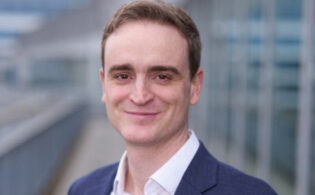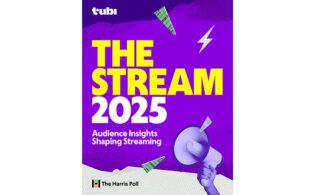David Salmon, managing director of international at Tubi, talked to MIPTV delegates about the AVOD platform’s planned U.K. launch this summer as part of the Cannes market’s Global FAST & AVOD Summit.
Free streaming in the U.K. is “heavily dominated” by YouTube and BVOD, Salmon said. “About three-quarters of households in the U.K. use YouTube regularly. BBC iPlayer has two-thirds, roughly; ITX has more than 50 percent penetration on a regular basis,” Salmon said. “These platforms are also complemented by aggregators and other platforms,” among them UKTV Play, Freevee, Pluto TV and Samsung TV Plus. These are alongside the global majors that are implementing ad-supported tiers. “So, it instinctively feels like there’s little room for new entries.”
Salmon joined Tubi to drive its international expansion on the heels of its breakout U.S. success. Now owned by FOX Corporation, it has become the leading AVOD service in the U.S. and Canada. The U.S. slate has around 200,000 on-demand titles across licensed films and series as well as a growing originals slate. It is now at some 74 million monthly active users. The platform is also available in Mexico and a few other LatAm markets, as well as Australia and New Zealand. Other markets, including the U.K., are planned for the next 12 months.
Salmon outlined where Tubi can compete in this increasingly competitive environment. BVOD and SVOD, he said, “typically tend to have slightly smaller and more heavily merchandised content libraries. They have strong brand safety, but fundamentally they don’t always have the same amount of depth.” YouTube, with a broader content offering, “is purely based on algorithmic discovery, but there is a certain amount of brand safety concern and content risk. Tubi as a business is somewhere in the middle. We typically tend to have a very large library. The experience is highly customized. This type of experience is only really possible with very extensive investments in machine-learning-based content discovery personalization. It also requires extreme discipline when merchandising comes in. It’s something that we do very relunctantly and nfrequently. By doing this, consumers are able to discover these amazing content rabbit holes. We are counter positions to broadcasting on-demand and subscription video-on-demand.”
Salmon noted that BVOD and SVOD are “structurally constrained” by the way they license content. BVODs place a “significant premium on the latest content. It has a massive recency bias.” SVOD, meanwhile, is leaning on franchises and big brands.”
These approaches, he said, “are absolutely valid within the segments that broadcasters and SVOD services play in. But they restrict the value of large libraries. If your whole experience is driven by recency, what’s the point of having a gigantic library? How much content can actually match what you’re trying to drive in terms of your vision, of what your brand should be. That drives massive demographic consolidation into a middle ground. You ten superserve the median viewer. This limits the amount of personalization and restricts the diversity of the audience. A large number of audiences just can’t be reached by a lot of these mainstream services. So, minority audiences, younger, diverse groups, are underserved by the traditional, middle-of-the-road platforms.”
Tubi generally over-indexes among cord-cutters and cord-nevers, as well as younger demos like the 18-to-34 set covered by advertisers. “Tubi is consistently able to find users that other services aren’t reaching.”






